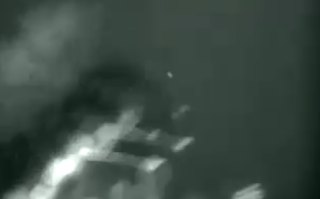Number Seventeen
Directed by Alfred Hitchcock in 1932
Based on a play by J.Jefferson Farjeon
Starring Leon M. Lion, Anne Grey, John Stuart, Donald Calthrop, Barry Jones and Gary Marsh
We analysed the sequence from 1.04 until 4.43.
The first moments of the clip show a windy, spooky night which makes the film start off with suspense as the weather is empathetic to the situation. To add to the suspense there is also empathetic tension building, non-diegetic music. This is a convention of thrillers as the sounds of the windy night are exaggerated, making the audience feel tense. The plot is, as with most thrillers, ambiguous and unclear at the beginning causing questions to arise in the audience's mind, and also stays with the conventions of thrillers focusing on a crime as the main plot.
Reaction shot.
Train... we know it's hard to believe
As with most thrillers, the audience is placed in the position of a voyeur with many camera angles being shot from over the shoulder and in positions that suggestion we are watching them without their knowledge.
Also, the sounds in the sequence of slamming doors and mysterious wind are as with the genre, exaggerated to encourage tension within the minds of the audience. The situation is firstly ordinary, with the Detective walking along the street. However the plot soon reveals itself to be extraordinary with the appearance of a mysterious man and a dead body. Also sticking to the common conventions of thrillers, the theme of identity is clear - we do not initially know who any of the characters are - in fact, the audience is not even aware that the man is a detective apart from subtle indicators of the mise-en-scene of his costume. It starts with an enigma as an opening.




No comments:
Post a Comment